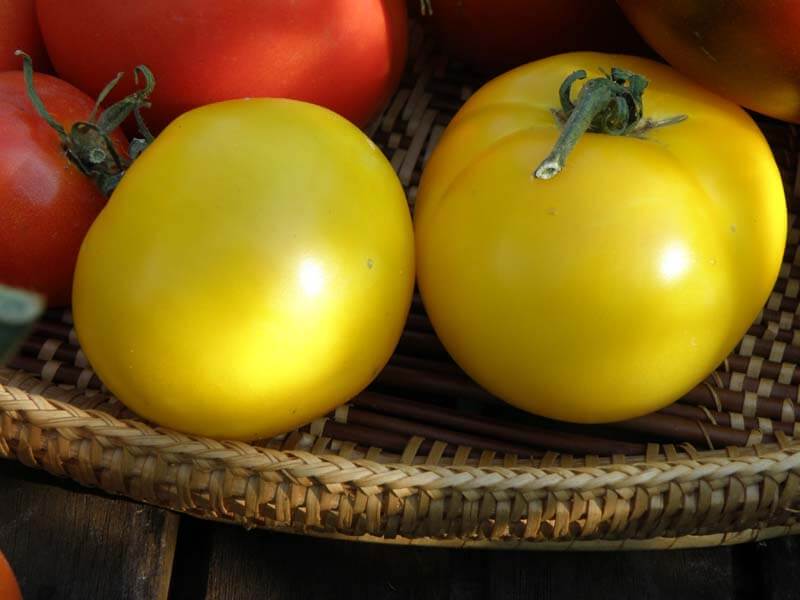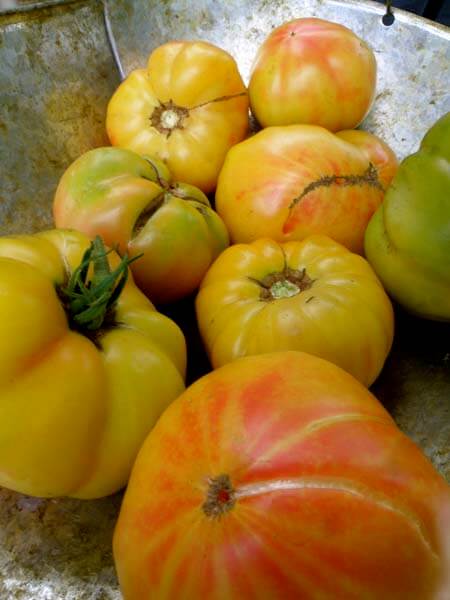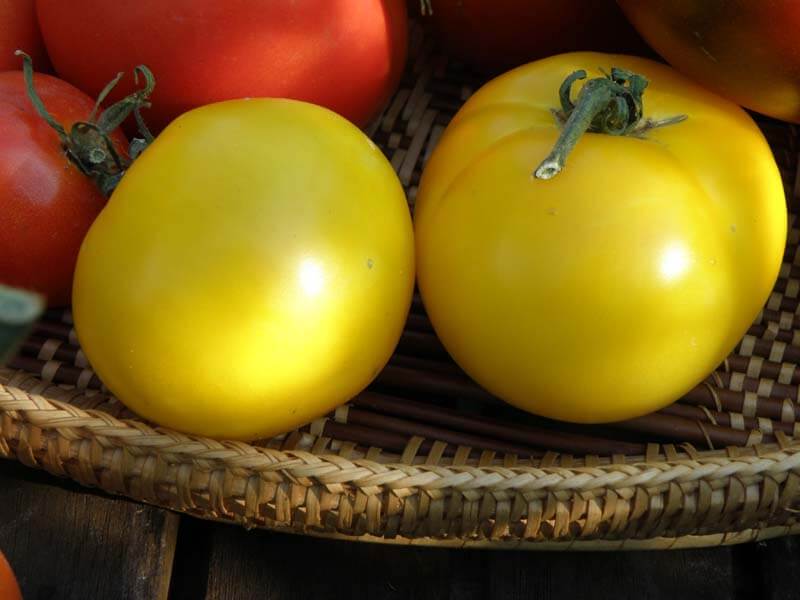One of life's simple pleasures is a juicy bite of ripe homegrown tomato, with sweet and tart flavors blending magically on the tongue. So what is the best tasting tomato? It depends! Tomato flavor comes from a mix of plant chemistry and garden variables such as temperature, sun, rain, and soil type. Flavor won't be the same everywhere or all the time.
What are the Basic Components of Tomato Flavor?
Flavor is a balance of acidity and sugar, plus the influence of elusive volatile compounds for aroma and flavor that tomato breeders are itching to grasp. The volatile compounds are an emerging science, while sugars and acids are more fully understood. We all know that some tomatoes taste sweet, while other taste acidic. But why? "The ones that taste the most acidic, or sour, have higher level of acids combined with low level of sugars," explains tomato breeder Dr. Randolph Gardner of North Carolina State University. "A tomato high in sugars and low in acids has a sweet taste. If a tomato is low in both acids and sugars, it has a bland taste. The preferred flavor for most people results from high levels of acids combined with high level of sugars to balance the taste."
There are other inherent reasons for variation in the intensity of a tomato's flavor and how acidic components balance with natural sugars. "An interaction of the plant's genetics with the environment is the key to tomato flavor," says University of Florida tomato breeder Dr. Jay Scott, who created Solar Fire tomato and developed a parent of Talladega tomato. (Incidentally, Jay Scott's father, Wilbur Scott, developed Jet Star, another variety we sell.)
Here are a few ways you can choose varieties for flavor or tweak your gardening techniques to coax the most flavor from what you've planted:
Size of fruit Cherry and grape tomatoes reach higher sugar concentrations than full-size tomatoes, so they taste sweeter. Want a really sweet tomato? Grow a cherry type.
Color of fruit Different pigments in tomatoes tend to produce different balances of sugars and acids. For example, orange or yellow tomatoes often taste milder and less acidic than red tomatoes. Some black tomatoes—created from the mixture of green and red pigments—have a reputation of having complex flavor (which some people love and others don't). It's not necessarily that a yellow tomato is less acidic than a red or black tomato, but that the combination of sugar and acid levels, as well as other compounds, makes for a milder taste. Try some of each color and test for yourself.
Foliage A lot of leaves can capture a lot of sunlight, so a plant with dense, healthy foliage can convert more sunlight into sugars and other flavorful components. Heirloom varieties have a greater percentage of leaf than do market-ready hybrids, which may partially explain their flavorful. Do all you can to keep leaves healthy.
Are Heirlooms Truly More Flavorful Than Hybrids?
"Most heirlooms have a very soft texture when ripe, and the cells rupture easily to release the juice along with the flavor components in the cells, " explains Dr. Gardner, father of several popular tomato varieties. That is the complete opposite of grocery store tomatoes, which are bred for shipping to withstand rougher handling, but not necessarily for flavor. However, there are many home garden hybrids bred with outstanding flavor. One quick place to find some is All America Selections. All home garden varieties, AAS winners have been evaluated for many criteria, including taste.



Growing a Flavorful Tomato
Regardless of which variety you grow, how you grow a tomato and external factors such as weather can make a difference in flavor. The same variety may taste better in California than in the Deep South, where the nights stay hot.
Soil Gardeners can maximize flavor by incorporating lots of organic matter into the soiland including plenty of potassium and sulfur, and by watering sparingly as fruit matures; dry soil concentrates flavor compounds, and soils high in clay content hold nutrients better than sandy soil (which are often lacking in sulfur and other important nutrients), leading to better flavor.
Temperature The ideal temperatures for growing flavorful tomatoes are 80s during the day and 50s or 60s during the night. When days and nights climb above these temperatures, tomatoes may have trouble setting fruit, and when temps stay lower, plants don't create flavor compounds as effectively. This doesn't mean that gardeners with higher, lower, or less-than-ideal temperatures can't grow flavorful tomatoes, but it helps to choose varieties suited to your region. Our Tomato Chooser can help.
Sun Intense sunlight maximizes photosynthesis in tomatoes, allowing the plants to make carbohydrates that are turned into flavor components—sugars, acids, and other compounds—in the fruit. Tomatoes prefer 8 hours of full sun daily. Wet, cloudy regions with little difference between day and night temperatures, such as the Northwest, do not typically produce the best-tasting tomatoes, though heirloom varieties like San Francisco Fog and Seattle's Best of All are known to perform better than most.
In the end, tomato flavor is a matter of taste – your taste. Study our tomato variety catalog for detailed descriptions of flavor, and also check our popular regional selections for your area. Here are some favorites:
- Flavorful cherry tomato varieties Husky Cherry Red, Sun Sugar, Black Cherry, and Super Sweet 100make terrific snacks. The Roma Grape (also called Juliet) tomato is a bit larger and has lots of uses.
- For rich, balanced flavor try Bonnie Original, Big Beef, Red Beefsteak heirloom, Better Boy, flavor favorite Cherokee Purple, and any All America Winner.
- Full-size tomatoes with sweet or low-acid characteristics include Lemon Boy, Mr. Stripey heirloom, Bush Goliath, and Black Prince heirloom tomato.






 Herbs
Herbs
 Vegetables
Vegetables
 Fruit
Fruit
 Flowers
Flowers
 Succulents
Succulents


